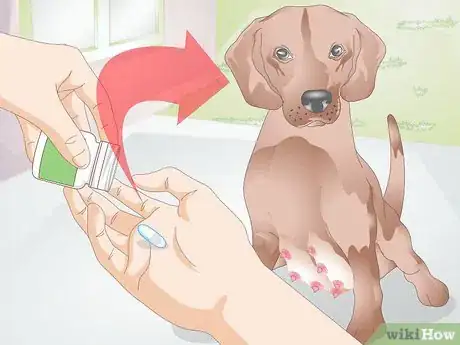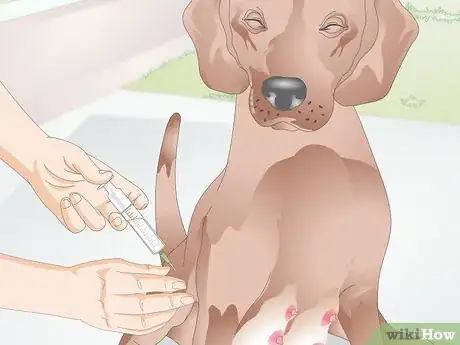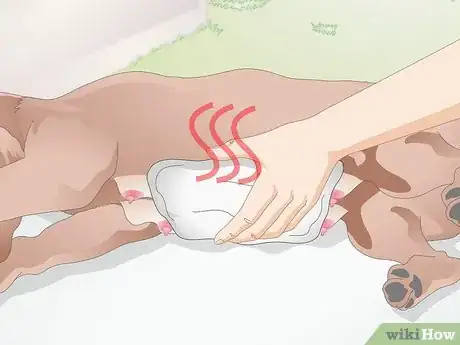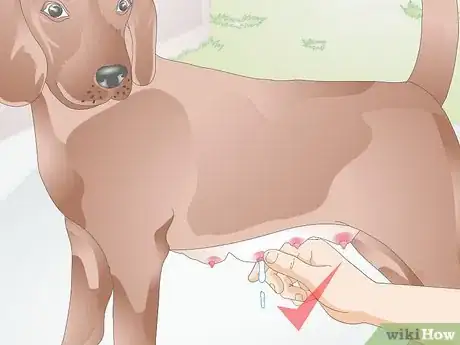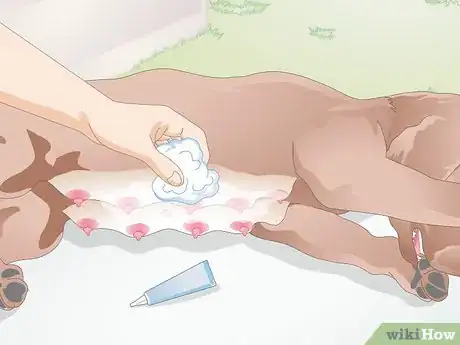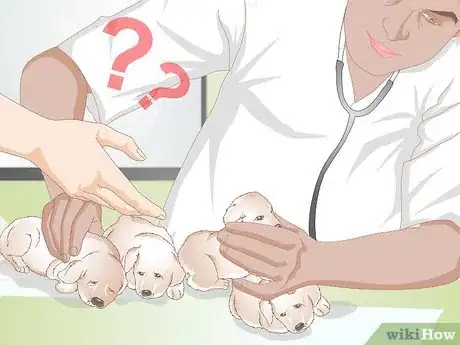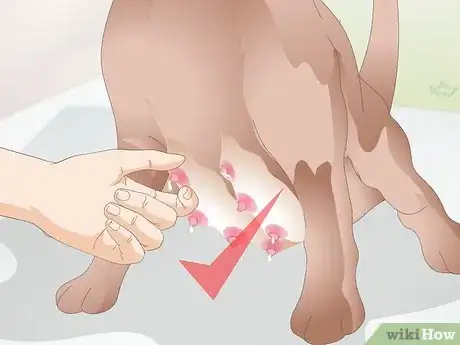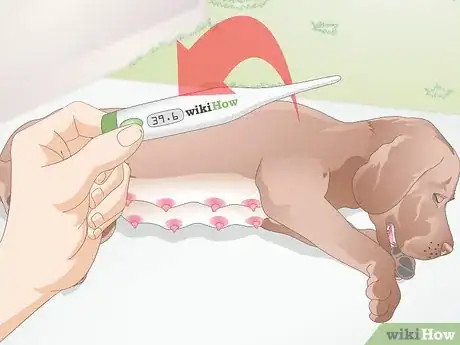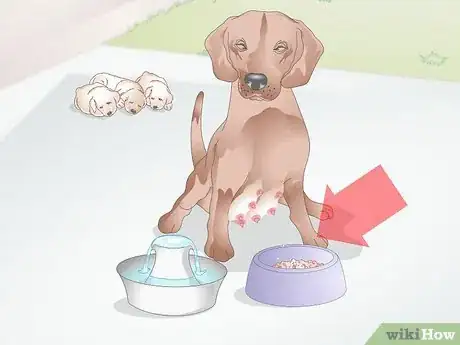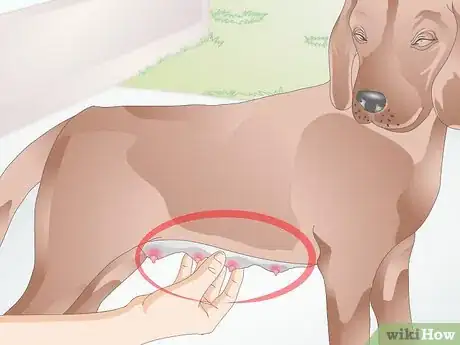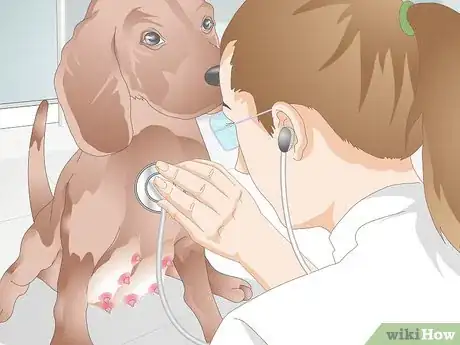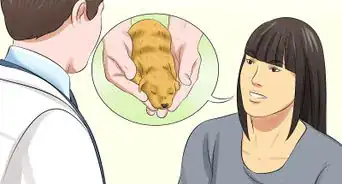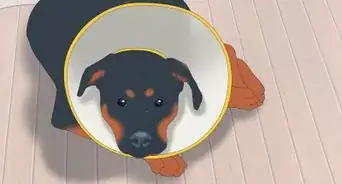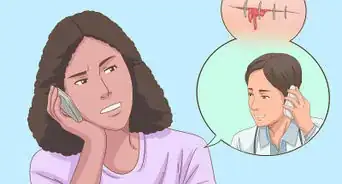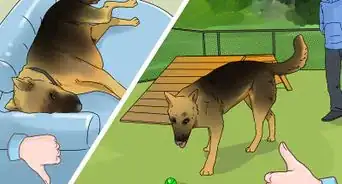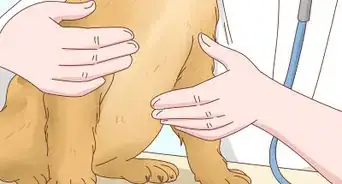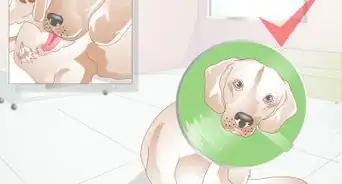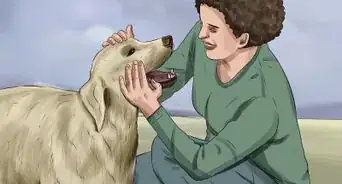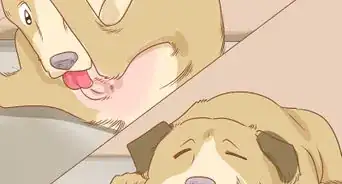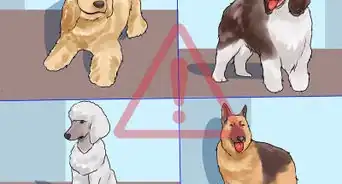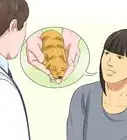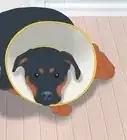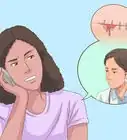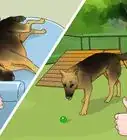This article was co-authored by Ray Spragley, DVM and by wikiHow staff writer, Jessica Gibson. Dr. Ray Spragley is a Doctor of Veterinary Medicine and the Owner/Founder of Zen Dog Veterinary Care PLLC in New York. With experience in multiple institutions and private practices, Dr. Spragley’s specializations and interests include non-surgical management of cranial cruciate ligament tears, Intervertebral Disk Disease(IVDD), and pain management in osteoarthritis. Dr. Spragley holds a BS in Biology from SUNY Albany and has a Doctor of Veterinary Medicine degree (DVM) from Ross University School of Veterinary Medicine. He is also a Certified Canine Rehabilitation Therapist (CCRT) through the Canine Rehab Institute as well as a Certified Veterinary Acupuncturist (CVA) through Chi University.
This article has been viewed 61,865 times.
It's expected that your dog will go through many physical changes after whelping puppies. However, if your dog seems to be in pain, refuses to nurse her puppies, or has red and hot mammary glands, she may have mastitis. Mastitis is an infection in the breast tissue that can be caused by severe scratches from the puppies' claws, by weaning too early, or from another infection. In any case, you should get immediate medical treatment for your dog if you suspect she has mastitis.[1]
Steps
Getting Medical Treatment
-
1Start your dog on antibiotics. Since mastitis is a bacterial infection of the mammary glands, the vet will prescribe antibiotics for your dog to take. This will treat the cause of the mastitis and the signs of mastitis should soon disappear. If she's still nursing the puppies, the vet will choose an antibiotic that is safe for the pups to ingest through her milk.
- Be sure to give the full course of antibiotics, even if your dog's mastitis improves. Stopping antibiotics too early could cause the infection to return even stronger than before.[2]
-
2Give your dog pain medication. Talk to the vet about pain medication you can give your dog, especially if she has a case of advanced mastitis. Depending on the pain medication, it may have anti-inflammatory properties which can help to reduce swelling while making your dog feel more comfortable.[3]
- If the vet recommends more than one type of pain medication to be taken together, consider writing down dosing information. For example, make a note of what type of pain med you gave, when you gave it, and the dosage you gave.
Advertisement -
3Use warm water compresses. Another way you can help your dog manage pain is to lay a warm water compress over the mammary glands. You can soak a clean cloth in warm water, wring it out, and place it gently on the tissue. Remove the cloth when it's no longer warm.[4]
- If your dog seems to like the warm compress, you can continue using it. Simply run the clean cloth under warm water and wring it out. Continue using the cloth as long as it's clean.
-
4Drain the mammary glands. Ask the vet to show you how to properly drain your dog's mammary glands by hand. Even if your dog is still nursing her puppies, you'll probably need to encourage lactation by expressing the milk. Keeping the mammary glands drained will prevent the breast tissue from becoming hard and painful.
- You can also gently massage around the teat using your index finger and thumb to help your dog lactate. The tissue should always feel soft. As soon as it starts feeling hard, that signals there is a buildup of milk that needs to be removed.
-
5Keep things clean. You'll need to keep the breast tissue and teats clean and dry. After cleaning and drying the area with a gentle solution, you may need to rub a soothing ointment from the vet on the tissue. This can soothe the sensitive skin and prevent irritation.[5]
- Remember to clean your dog's bedding frequently. Never let your dog rest on bedding that's dirty or soaked with urine. Dirty bedding conditions can cause infection or make your dog's mastitis worse.
-
6Talk with the vet about caring for the puppies. If the puppies are still relying primarily on your dog for most of their nutrition, discuss if you should give them a nutritional supplement. You should also talk with the vet about whether or not your dog should keep nursing her puppies while healing from mastitis.[6]
- The vet may recommend that your dog continue to nurse since it's important for her mammary glands to be emptied frequently.
Recognizing and Diagnosing Mastitis
-
1Check your dog for normal lactation. Make a point of checking your dog every day for signs of mastitis after she begins lactating. If your dog is lactating normally, her mammary glands (breast tissue) will be warm and will look larger than usual. She shouldn't seem uncomfortable or in pain if you touch the breast tissue.
- The breast tissue enlargement is simply caused by the presence of milk.
-
2Look for physical signs of mastitis. Your dog could be showing signs of mastitis if she runs a fever, has red breast tissue, has discharge from the mammary glands or the tissue is hot, hard or streaked. Take your dog to the vet for an exam and diagnosis of mastitis.
- Although mastitis is rare in dogs, it usually happens a few weeks after the birth of the puppies.
-
3Pay attention to your dog's behavior. Mastitis can quickly become painful for your dog. If your dog appears to be in pain when you touch her or she seems snappy when her dogs nurse, she may have mastitis. Some dogs with mastitis might not let their pups nurse at all and their energy levels might drop.[7]
- Monitor how much your dog eats while she's nursing. If she stops eating, she may have mastitis.
-
4Recognize signs of advanced mastitis. If your dog has an advanced case of mastitis, you'll most likely realize that something is wrong. Your dog's mammary glands (breast tissue) may be almost black. Your dog will be in a lot of pain when you touch the glands and they'll feel hard and hot.[8]
- If your dog has advanced mastitis, she'll need immediate medical attention since she could go into septic shock.
-
5Get a medical diagnosis. The veterinarian will do a physical exam and check for many of the things you've already been monitoring your dog for (hard, hot, red mammary glands). The vet will also test your dog's blood and milk to confirm a mastitis diagnosis.[9]
- Usually, the vet will be able to diagnose mastitis just by looking at the physical signs your dog presents.
References
- ↑ http://www.akc.org/dog-breeders/responsible-breeding/
- ↑ http://www.pets4homes.co.uk/pet-advice/mastitis-in-dogs-diagnosing-treatment-and-prevention.html
- ↑ http://www.lowchensaustralia.com/breeding/mastitis.htm
- ↑ http://www.merckvetmanual.com/mvm/reproductive_system/reproductive_diseases_of_the_female_small_animal/mastitis_in_small_animals.html
- ↑ http://www.lowchensaustralia.com/breeding/mastitis.htm
- ↑ http://www.dogbreedinfo.com/breedingdogs/mastitisindogs.htm
- ↑ http://www.akc.org/dog-breeders/responsible-breeding/
- ↑ http://www.akc.org/dog-breeders/responsible-breeding/
- ↑ https://www.petfinder.com/dogs/dog-health/mastitis-in-dogs-treatment/
About This Article
To identify mastitis in your nursing dog, check for symptoms such as fever, redness and discharge around the nipples, and breast tissue that is hard or hot to the touch. Your dog might also snap at her puppies or not let them nurse. If you notice these symptoms, call your vet right away. If they prescribe antibiotics for your dog, make sure to give her the whole course to make sure the infection clears up. You can also give your dog pain medication to manage her symptoms if your vet recommends it. To help reduce her pain and discomfort, place warm compresses on your dog’s nipples and gently massage them to express excess milk. You can also prevent further infection by cleaning the affected area regularly. For more tips from our Veterinarian co-author, including how to care for the puppies while their mother is recovering, read on!
